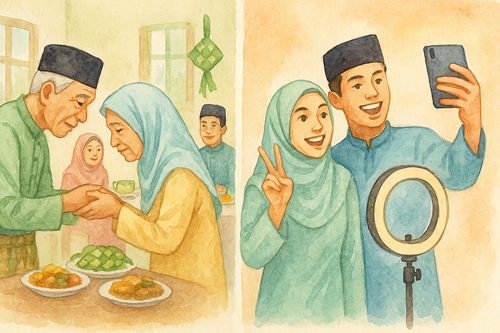**This article was published in English and has no translation in Bahasa Melayu**
**This article was published in THE STAR on 12 July 2019**
By Assoc. Prof. Dr. Abd. Lateef Krauss Abdullah
The recent announcement by the Youth and Sports Minister on the new legal definition of ‘youth’ of 15 to 30 years of age has caused consternation among many members of the national youth movement. Several states have even declared that, while agreeing in principle to the new decree, they will continue to abide by the 15 to 40 age range. Many current youth leaders feel that most of the below-age-30 association members are not yet capable of carrying the mantle of leadership. Current leaders even fear for the existence of their associations if left in the hands of a younger cohort of leaders who may or may not be ready for the challenge. This is a major structural change that will certainly continue to have ramifications on the national youth movement; a movement that is already facing the challenge of declining membership in many of its associations.
How this issue plays out should be of great concern, for organized youth associations provide critical non-formal learning experiences that young people cannot get elsewhere. Youth are often marginalized from society’s organizational power structures. As such, they seldom have the opportunity to experience leadership in organizations that are designed around their needs and interests. Youth associations also provide young people with opportunities for meaningful experiential, community-based learning. This makes youth associations a natural training ground for young people to acquire the skills of leadership that they cannot get elsewhere, i.e. the ‘soft’ skills that are so essential today for human and career development. This is also why many leaders of youth associations go on to become national leaders in the political and business sectors.
One of the challenges facing the current Malaysian youth movement is the unnatural barrier between the worlds of formal and non-formal education. This barrier is formalized by the separation and lack of historical cooperation between the Ministries of Youth and Sports and Education. Yet between these two ministries lies a potential solution to both the declining level of participation by youth in the formal youth movement on the one hand, and the challenge of preparing the under-30-year-olds for leadership in youth associations on the other. Opening schools up to youth associations and allowing the associations to work as co-curricular bodies would not only provide a tremendous boost to youth associations’ membership, but would also help the schools provide more enriching non-formal educational opportunities for their students. It would also create a more holistic and supportive learning environment, with older youth association members working as mentors to the school-going youth. Partnerships along these lines would make student learning more dynamic for students that are often disengaged with learning restricted to classroom settings.
While debate rages as to whether the ‘youth’ definition should round out at 30 or 40 years of age, few have questioned why 15-year-olds – despite being legally within the age of ‘youth’ – have been more or less excluded from active youth association participation. If youth associations were active in secondary schools, then leadership training could begin at 15 as opposed to 24 or 25, as is often currently the case. With 15-year-olds involved in the work of youth associations, there is no question they can acquire the experiences and training needed to take up leadership roles earlier in their lives.
Our research at UPM on youth development has shown that young people’s engagement in communities, an important aspect of non-formal learning, is on the decline. This makes sense; as membership in formal youth associations decreases, so does youth involvement in organized, community-based programs and projects. Having youth associations working in schools as part of the co-curricular infrastructure would greatly increase 15 to 18-year olds’ engagement in service and community activities, thus providing an important link between classroom and community-based learning. This would begin to break down the artificial walls that separate our learning institutions from the real world.
To facilitate this idea, a serious rethink is needed on the current structure of the agencies responsible for education and youth development. It is the author’s humble opinion that a Ministry of Education and Youth Development would effectively marry the complementary institutions of formal education with non-formal education to promote lifelong learning. This would advance the nation’s aspiration of developing lifelong learners by looking at education more broadly, which is essential for producing world-ready, service-oriented young people.
Writer:
Assoc. Prof. Dr. Abd. Lateef Krauss Abdullah
Faculty of Educational Studies
Research Associate for Youth Social Health and Well-Being Laboratory
Date of Input: 23/10/2019 | Updated: 28/11/2019 | hairul_nizam
MEDIA SHARING


























